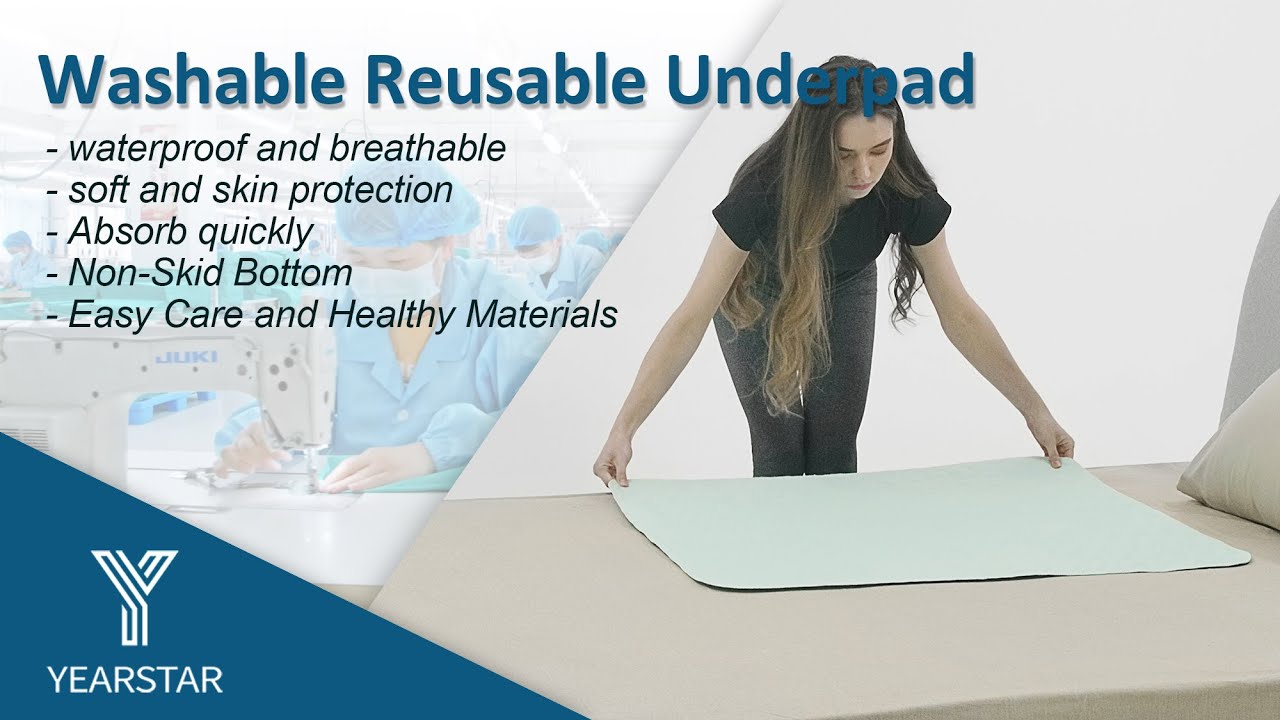Maintaining healthy skin is a critical aspect of overall health and well-being, especially for individuals with limited mobility, incontinence, or those recovering from illness or surgery. The skin acts as our body’s primary barrier against infection. When skin integrity is compromised, the risk of painful complications like skin breakdown, pressure ulcers, and infections dramatically increases. Simple yet effective tools like underpads play a vital, often unsung, role in preventing these issues. This post will explore the crucial function of underpads in protecting skin integrity and preventing infections.
1. Understanding Skin Breakdown: A Vulnerable Barrier
Skin breakdown refers to damage to the skin’s layers, ranging from redness and irritation to open sores and pressure ulcers. Several factors contribute to skin breakdown, including:
- Moisture: Prolonged exposure to moisture (urine, feces, sweat, wound exudate) can soften the skin, making it fragile and more susceptible to damage. This is known as maceration.
- Pressure: Constant pressure on bony areas can restrict blood flow, leading to tissue death.
- Friction and Shear: Rubbing (friction) or stretching (shear) of the skin during movement or repositioning can damage the skin layers.
Compromised skin is not only painful but also provides an entry point for bacteria and other pathogens, increasing the risk of infection.
2. How Underpads Prevent Skin Breakdown: The Power of Moisture Management
Underpads, also known as bed pads, chux, or incontinent pads, are designed with multiple layers to effectively manage moisture, which is a key contributor to skin breakdown:
- Absorption Layer: The core of an underpad is typically made from superabsorbent polymers or pulp that quickly absorb liquids. This draws moisture away from the patient’s skin.
- Wicking Layer: The top layer is often designed to wick moisture away from the surface and into the absorbent core, keeping the patient’s skin drier.
- Waterproof Barrier: The bottom layer is a waterproof backing that prevents absorbed moisture from leaking through to the bed linens or mattress.
By rapidly absorbing and containing moisture, underpads help keep the patient’s skin dry. Dry skin is less prone to maceration and retains its natural barrier function more effectively, significantly reducing the risk of irritation and breakdown.
3. How Underpads Help Prevent Infections
The role of underpads in preventing infections is closely linked to their moisture management capabilities:
- Creating a Less Hospitable Environment for Pathogens: Bacteria, fungi, and other microorganisms thrive in warm, moist environments. By keeping the skin surface and surrounding area dry, underpads create a less favorable environment for these pathogens to multiply.
- Maintaining Skin Barrier Integrity: Healthy, intact skin is the body’s first and most important defense against infection. By preventing skin breakdown caused by moisture, underpads help maintain this crucial barrier, preventing pathogens from entering the body.
- Reducing Contamination of Linens: Underpads contain spills and moisture, preventing the contamination of bed linens. This helps maintain a cleaner environment around the patient, reducing the overall microbial load.
- Facilitating Easier Linen Changes (Disposable): For disposable underpads, quick and easy removal and replacement after they become soiled reduces the time the patient is exposed to moisture and minimizes the handling of contaminated linens, further supporting infection control protocols.
4. Beyond Moisture: Additional Protective Benefits
While moisture management is primary, underpads offer other benefits:
- Reducing Friction and Shear: Some underpads have a smooth top surface that can help reduce friction and shear forces when repositioning a patient, further protecting fragile skin.
- Protecting Bedding and Mattresses: By containing spills, underpads protect expensive mattresses and bedding from damage and contamination, contributing to a more hygienic care environment.
5. Who Benefits Most from Underpads?
Underpads are particularly beneficial for:
- Individuals with urinary or fecal incontinence.
- Patients recovering from surgery or illness with limited mobility.
- Individuals with wounds or drainage.
- Elderly individuals with fragile skin.
- Patients requiring frequent repositioning.
6. Choosing and Using Underpads Effectively
To maximize the benefits of underpads, consider absorbency level, size, and whether disposable or reusable options are best suited for the needs. Most importantly, ensure soiled underpads are changed promptly to maintain a dry environment for the patient’s skin. For reusable pads, proper laundering protocols are essential for hygiene.
7. Conclusion: Simple Tools, Significant Protection
Underpads are often seen as a basic supply item, but their role in preventing skin breakdown and infections is significant. By effectively managing moisture, they help maintain the skin’s natural barrier function, creating a less hospitable environment for pathogens. Incorporating the appropriate use of underpads into patient care routines is a simple yet powerful strategy for protecting vulnerable skin, preventing painful complications, and upholding the highest standards of hygiene and patient safety.

